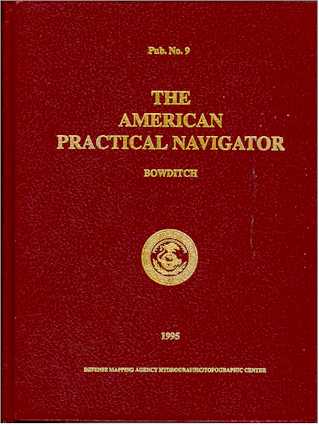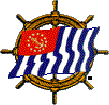Useful and Related Web Sites
NOS Nautical Charts and Updates |
Weather Related Web Sites |
U.S. Coast Guard Navigation Center |
Celestial Navigation Web Sites |
Cold Water Survival Information |
USPS Educational Fund |
Please be aware that these web sites are NOT USPS sites, and that you are leaving the USPS domain when you click on these links. These links are posted for information only, and USPS assumes no liability for content or results of using the information. As always, we strongly recommend using up-to-date anti-virus and anti-spyware programs at all times, especially when downloading information from unfamiliar web sites.
Nautical Charts and Updates
The National Ocean Service (NOS) Office of Coast Survey has expanded the function of its chart update website. The website allows mariners to update their nautical charts from one database that includes information from NOS, the National Geospatial-Intelligence Agency (NGA) Notice to Mariners, the Coast Guard Local Notice to Mariners and the Canadian Coast Guard Notice to Mariners. U.S. Chart No. 1, Nautical Chart Symbols and Abbreviations, is also available at this site. This document shows the meaning of the symbols that appear on all U.S. charts. Some of the files are rather large, so be patient when clicking on the contents of the web page. To access the website and for more information, go to: http://www.nauticalcharts.noaa.gov/. (05 Dec 08)
Weather Related Web Sites
Internet websites generally have the highest quality and most detailed weather information, including radar and satellite images. With expanding wireless access to the Internet (computers, smart phones, etc.) the public has access both at home and onboard. The most comprehensive site is NOAA’s National Weather page that serves as a portal into all of the NOAA/NWS web pages. www.weather.gov.
Unlike regular weather reports and forecasts NOAA marine forecasts contain detailed information about wind speed and direction, precipitation, visibility and most importantly sea state. Wave heights are reported in feet based on the average height of the highest one-third of the waves in a wave train. Higher waves above this average are to be expected.
In addition to regular weather and marine forecasts, NOAA and commercial enterprises provide other forecasts, predictions, reports, alerts, and data of interest to boaters. Upper air charts, for example, are of particular interest to those who know how to interpret them for forecasting purposes. There are also university websites that have regional as well as national weather information, excellent links, and educational materials.
Listed below are some of these weather and weather related websites.
General Weather
| NWS Weather Page | www.weather.gov |
| AccuWeather | www.accuweather.com |
| Weather Underground | www.wunderground.com |
| Unisys | www.weather.unisys.com |
| Intellicast | www.intellicast.com/ |
| Weather Bug | www.weatherbug.com |
Marine Forecasts and Sea Conditions
| NWS Marine Page | www.weather.gov/om/marine/home.htm |
| Marine Gridded Forecasts | http://nowcoast.noaa.gov/mariner.html |
| NOAA National Data Buoy Center | www.ndbc.noaa.gov |
| NOAA Marine Radio Fax Charts | http://tgftp.nws.noaa.gov/fax/marine.shtml |
Tropical Storms and Severe Weather
| NOAA National Hurricane Center | www.nhc.noaa.gov/index.shtml |
| Unisys Hurricane/Tropical | http://weather.unisys.com/hurricane/index.html |
| NOAA Storm Prediction Center | www.spc.noaa.gov/ |
Forecasting Tools
| NWS Daily Weather Maps | https://www.lib.noaa.gov/collections/imgdocmaps/ daily_weather_maps.html |
| NWS Surface & Upper Air Maps | www.spc.noaa.gov/obswx/maps/ |
| NOAA Marine Radio Fax Charts | http://tgftp.nws.noaa.gov/fax/marine.shtml |
| GRIB Viewer – zyGrib | http://zygrib.org |
River Forecasts
| NOAA River Observations | http://water.weather.gov/ahps/index.php?ahps=0 |
| NOAA River Forecasts | http://water.weather.gov/ahps/forecasts.php |
Tides and Currents
| NOAA Tide Predictions | http://tidesandcurrents.noaa.gov/ tide_predictions.shtml |
| NOAA Current Predictions | http://tidesandcurrents.noaa.gov/curr_pred.html |
University Weather Sites
| College of DuPage | www.weather.cod.edu |
| Penn State University | http://php.scripts.psu.edu/dept/ur/weather/ index.php |
| Plymouth State | http://vortex.plymouth.edu/ |
| University of Arizona | http://www.atmo.arizona.edu/index.php?section=weather |
| University of Washington | www.atmos.washington.edu/ |
| University of Wyoming | http://weather.uwyo.edu/ |
Canada Weather
| General Weather | http://weather.gc.ca |
| Marine Weather | http://weather.gc.ca/marine/ |
U.S. Coast Guard Navigation Center
The US Coast Guard Navigation Center web site, with information about GMDSS, GPS, VHF/DSC, and other maritime telecommunications information, is at http://www.navcen.uscg.gov/.
Celestial Navigation Web Sites
Some links to sites that may be of interest to JN and N students are cited below. We think that you will find some of them very interesting in your studies of celestial and offshore navigation. If you have some personal favorites, please send them to us at the ONCom address.
Teacup Navigation has free celestial software and a free book in PDF format for downloading. The book teaches the concepts and techniques of celestial navigation, some interesting history, and computational methods using a simple pocket scientific calculator. The book also has condensed tables and work sheets for when you have no calculators available. It also shows how to build your own navigational tools. The free comprehensive celestial navigation software is for the Windows operating system. It will run in Ubuntu (Linux) when "Wine" software is also installed. The same is true for a Mac when the Mac version of Wine is used. The Teacup Navigation site is at http://www.teacupnavigation.net/CN.html. (Contributed by P/C Stan Klein, Middletown Power Squadron)
StarCalc is a program that will bring a planetarium onto your computer monitor. The program is a creation of Alexander E. Zavalishin, a Russian, and is provided at no charge. This program will show a picture of the sky at any time of the day or night from any location in the world at any time. The program provides an alternative to the "Star Finder" plastic circular slide rule used in the JN and N courses. Using the program, you can print a copy of the sky showing the bodies that you intend to "shoot". The graphic provided by StarCalc gives a clear diagram of where the celestial targets of opportunity are located and the hassle of plotting solar system objects is eliminated. The StarCalc program can be downloaded from: http://www.relex.ru/~zalex/main.htm. (Contributed by Lt/C Robert B. Small, Jacksonville Sail and Power Squadron)
SeaClear is a freeware navigation program for Windows NT 4.0, 2000 or 95/98/ME which, when connected to a GPS (or other unit capable of transmitting NMEA position data), will display the vessel on a chart, with the current position, speed and direction. New charts are loaded as needed. The track may be saved to a file for later reviewing, and log book entries may be manually and automatically entered. An unlimited number of routes and waypoints may be created and used to assist in the navigation. The screen area for charts is maximized with most functions accessed with the right mouse button. Zooming is provided with support for IntelliMouse wheel. The program may be downloaded from: http://www.sping.com/seaclear/. (Contributed by Lt/C Robert B. Small, Jacksonville Sail and Power Squadron)
There are links for those who use their PDAs for celestial work. Check out the PDA links. (Contributed by P/Cs Dan Bartell and Stan Klein)
 National Geospatial-Intelligence Agency (NGA) has links to an on line version of the 2002 Edition of Bowditch's The American Practical Navigator, as well as Pub 249 for the Air Navigation Tables, Pub 229 for the Marine Navigation Tables, and the Atlas of Pilot Charts. Click on Publications on the left side, and then choose your document from the Menu Options at the top of the resulting page. The NGA site also has several Marine Navigation Calculators. These calculators were developed from the tables at the back of The American Practical Navigator and from other select publications. Not all tables are replicated here. There are several piloting, celestial navigation, and sailings functions. Click on View Nautical Calculators on the left side, and then choose your calculator from the Menu Options at the
National Geospatial-Intelligence Agency (NGA) has links to an on line version of the 2002 Edition of Bowditch's The American Practical Navigator, as well as Pub 249 for the Air Navigation Tables, Pub 229 for the Marine Navigation Tables, and the Atlas of Pilot Charts. Click on Publications on the left side, and then choose your document from the Menu Options at the top of the resulting page. The NGA site also has several Marine Navigation Calculators. These calculators were developed from the tables at the back of The American Practical Navigator and from other select publications. Not all tables are replicated here. There are several piloting, celestial navigation, and sailings functions. Click on View Nautical Calculators on the left side, and then choose your calculator from the Menu Options at the
NOTE: These calculators require a JavaScript-enabled browser.
The Astronomical Applications Department of the US Naval Observatory has useful information on various astronomical phenomena. There is also a link to another site where you can purchase a computer program entitled Multiyear Interactive Computer Almanac (MICA).
Analemma Curve. Want to know more about analemma curves? Try out www.analemma.com. It contains some very interesting information, if you'd like to enrich your Navigation course of study. Just click on the word analemma on the opening page.
Cold Water Survival Information
-
American Canoe Association
Anyone boating in a cold water environment should be aware of the serious and potentially mortal consequences of falling overboard. Download a PDF pamphlet from the ACA that should be distributed to America's Boating Course students as well as our own members.
-
BoatU.S. Foundation
Cold water immersion is almost always the result of capsizing, swamping, or falling overboard from a boat under 26 feet. Here are six tips from a page in the BoatU.S. Magazine, February/March 2015 to help prevent disaster.
 |
|
|

